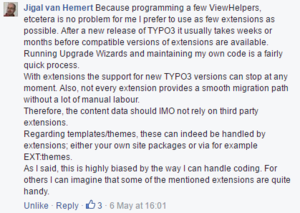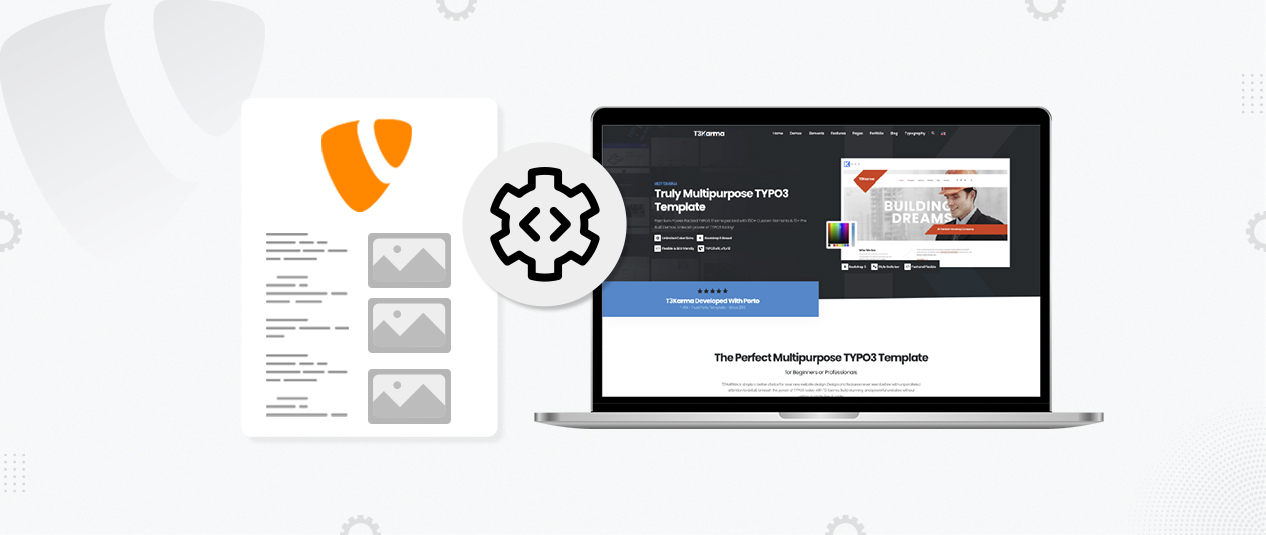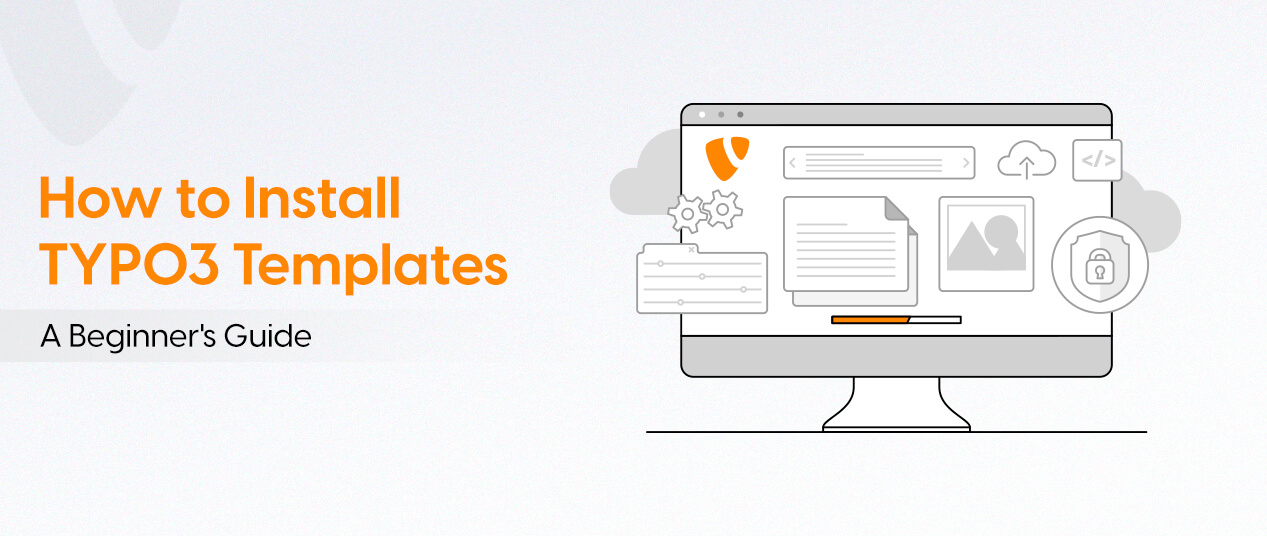This guide outlines the most effective TYPO3 template integration methods to ensure:
- Compatibility with future TYPO3 versions
- Flexible solutions aligned with modern frontend development practices
- Faster implementation, saving time for higher-priority tasks
- Easier maintenance across multiple TYPO3 instances
Choosing the right integration approach supports scalability, maintainability, and long-term project success.
Different TYPO3 templating method:
TYPO3 is one of the most powerful enterprise level Content Management Systems and it is very easy to integrate your own tailored made HTML Template. There are different approaches available and even you can develop your own custom framework or TYPO3 Template dummy which can be reused for all your projects.
The Survey at T3POLL DAY:

The ‘T3POLL DAY’ is a special day which has been arranged by iTUG. On this day we create polls on different social media channels to get to know the opinion of the TYPO3 community about ongoing hot topics concerning the TYPO3 CMS. In May 2016 we asked the TYPO3 community which TYPO3 template integration method they like best and use for their projects. The participation was on a very high rate. Thanks for all your great comments and responses! Please find below the summary.
The Nominees for TYPO3 templating method:
We have defined a number of the well known TYPO3 templating methods, so the TYPO3 Integrators from beginners to experts can vote for. Here is the list:
- Fluid + EXT:Gridelements + EXT:DCE
- Fluid + Gridelements (w/o DCE etc)
- Pure Extbase/Fluid
- FluidTYPO3.org (Fluid/Flux/VHS etc.,)
- Fluid +EXT:mask
- TYPO3-Themes.org
- EXT:bootstrap_package
- bsdist.ch
- EXT:automaketemplate (still?)
- EXT:TemplaVoila (still?)
- Traditional Templating (still?)
The Top 3 templating methods for TYPO3 CMS:
1st - Pure Extbase/Fluid Extbase/Fluid is modern templating method which was introduced at TYPO3 4.3 at November 2009 in TYPO3 Core. The whole template can be developed within available core TYPO3 like Fluid templates, TypoScript, Extbase code etc.
2nd runner up - Fluid + EXT:Gridelements + EXT:DCE The combination of Fluid template & other extensions. EXT:Gridelements: It’s one of the famous TYPO3 extension which provides Grids/Columns. EXT:DCE: Dynamic Content Element This TYPO3 extension is very useful to develop flexible content element.
3rd runner up - FluidTYPO3.org (Fluid/Flux/VHS etc.,) It’s one another widely used method with combination of multiple extensions like EXT:flux, EXT:vhs, EXT:fluidpages, EXT:fluidcontent. It provides very quick implementation of Backend layout & frontend output with XML & Fluid template.
What about other methods?
There are many startup packages (TYPO3 Dummys) to develop TYPO3 websites in different ways like typo3-themes.org, bootstrap_package, bsdist.ch which are powerful but not popular yet.
The old-school approaches like TemplaVoila, Automaketemplate, Traditional markers templating are not being used more either their old approach or the incompatibility with the latest TYPO3 version like 7.6.x LTS.
Conclusion:
Many TYPO3 developers prefer using the core Extbase/Fluid templating method. This approach avoids common issues such as compatibility risks with future TYPO3 releases or discontinued support from third-party extensions. Storing content within the core ensures long-term stability and better upgrade paths, which is something TYPO3 Agency highly recommends for maintaining consistency.
At the same time, Best extensions like DCE, Gridelements, FluidTYPO3, Mask, and TYPO3-Themes.org have gained widespread adoption. These tools offer simple, flexible, and efficient development workflows and continue to receive strong community support. Integrators often use them alongside backend layouts and Fluid templates to streamline content creation.
Both approaches have their strengths depending on project needs, scalability goals, and development resources. TYPO3 integrators are encouraged to evaluate each method carefully to ensure optimal compatibility, maintainability, and performance.

On the other hand, the authors & contributors of TYPO3 extensions eg. DCE, Gridelements, FluidTYPO3.org, Mask, Gridelements, TYPO3-Themes.org & many others are continuesly giving their great support to TYPO3 Community. Nowdays, those extensions are widely used because of simple, flexible & faster development. TYPO3 integrators try to implement different combinations using backend layout, fluid template, other extensions for FCE. Personally, I would like to thank to all of them for their such good contribution to TYPO3.
Which one is your favorite TYPO3 templating approach? You can provide us your feedback/suggestions/questions at below comment section.
FAQs:
TYPO3 template integration is the process of connecting frontend designs with TYPO3’s backend using methods like Fluid templates, TypoScript, and site packages.
The most used methods are Fluid templating with TypoScript and extensions like DCE, Gridelements, or Mask for flexible content rendering.
Using a custom sitepackage with Fluid templates and TypoScript is recommended for long-term maintainability and compatibility.
Yes, widely adopted extensions like DCE and Mask are stable, but it’s important to monitor compatibility with future TYPO3 versions.
Yes, HTML templates can be adapted into Fluid templates for use with TYPO3’s templating engine.
Some prefer core solutions due to concerns about extension updates, support discontinuation, or content lock-in.
Fluid is TYPO3’s native templating engine used to render dynamic content using HTML and logic-based ViewHelpers.
Yes, TypoScript is essential for mapping templates and managing content rendering in TYPO3.
Yes, but it may require significant refactoring depending on the complexity and structure of the original setup.
Core-based Fluid templates with a clean TypoScript setup and Composer-managed sitepackage provide the best performance and upgrade path.





Be the First to Comment